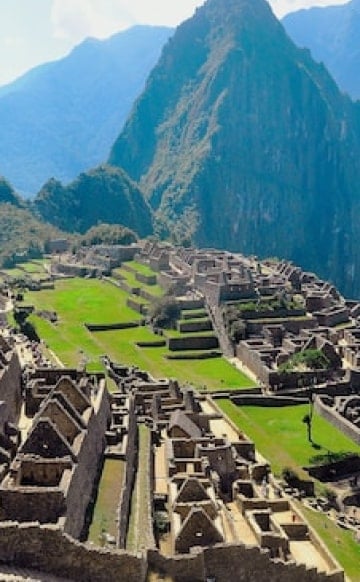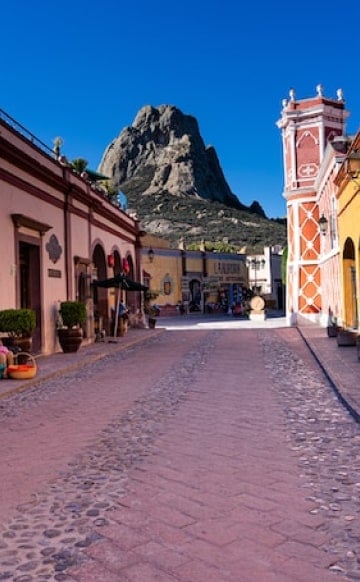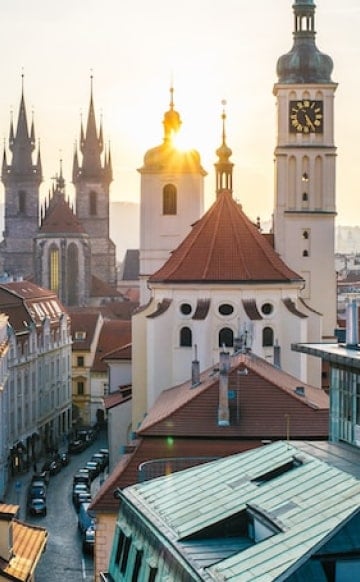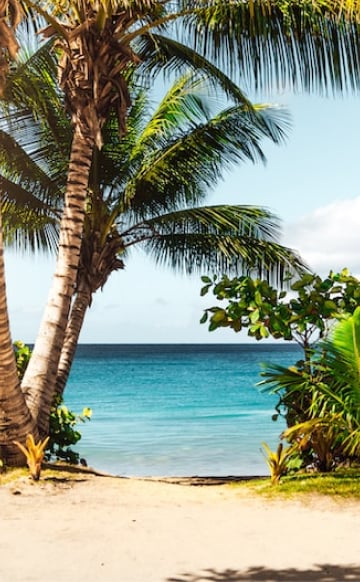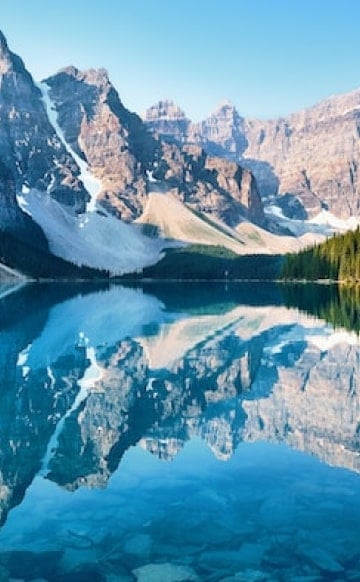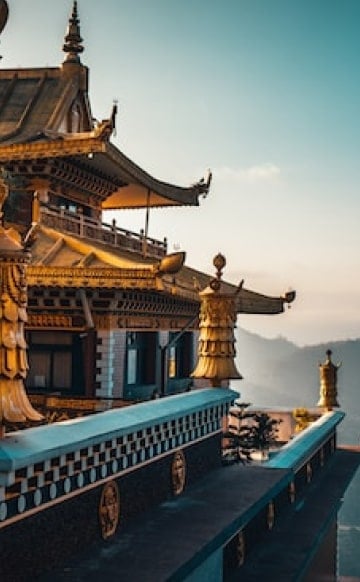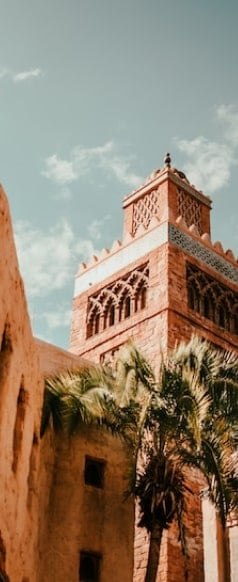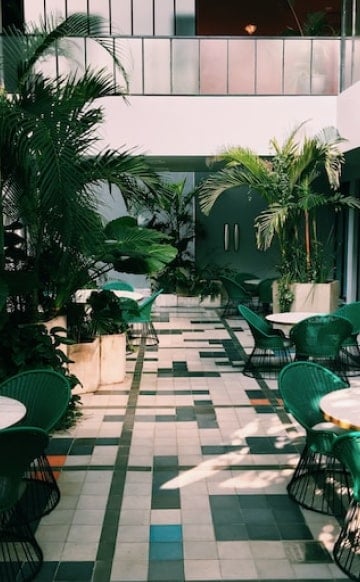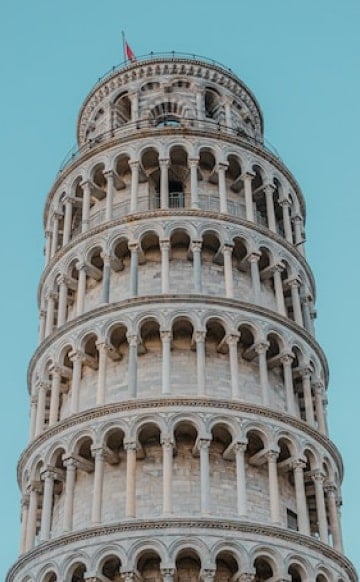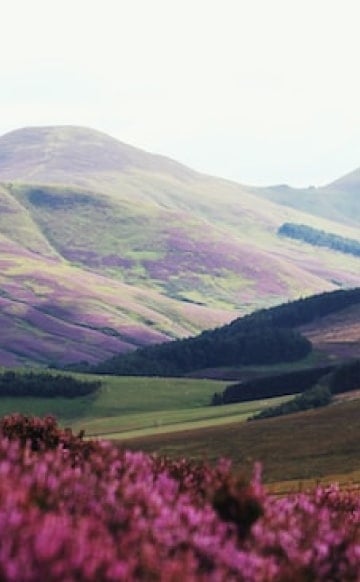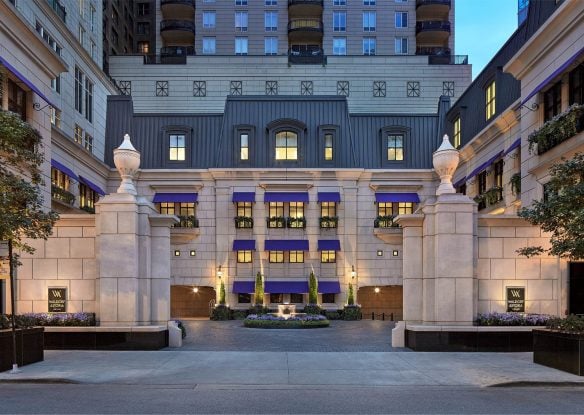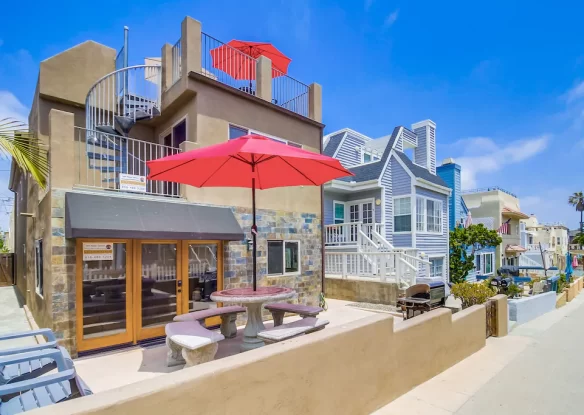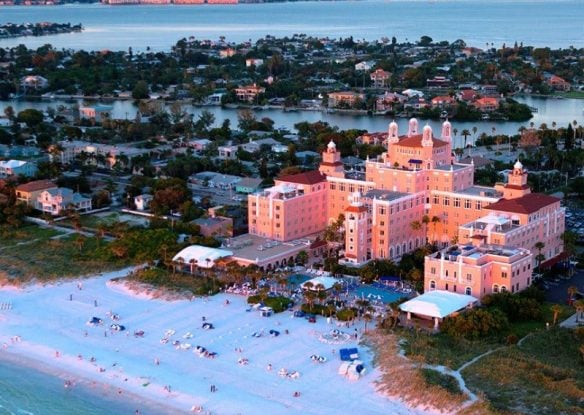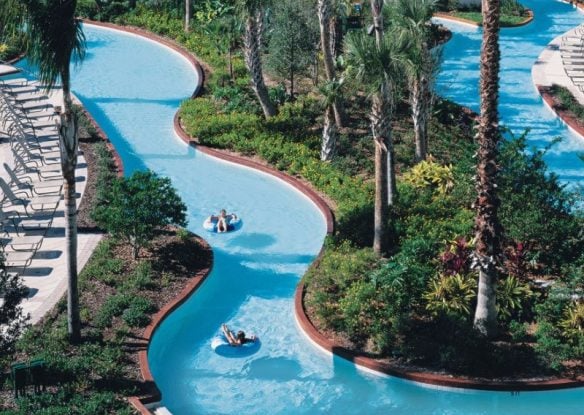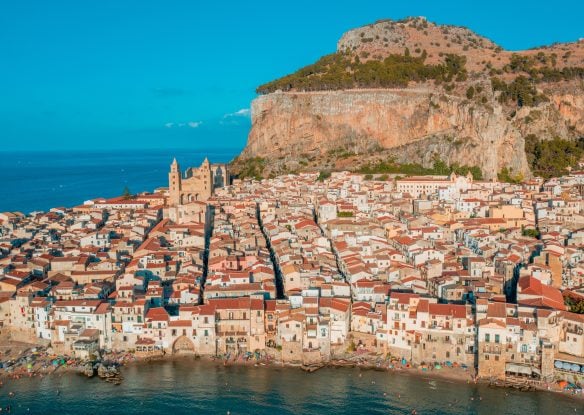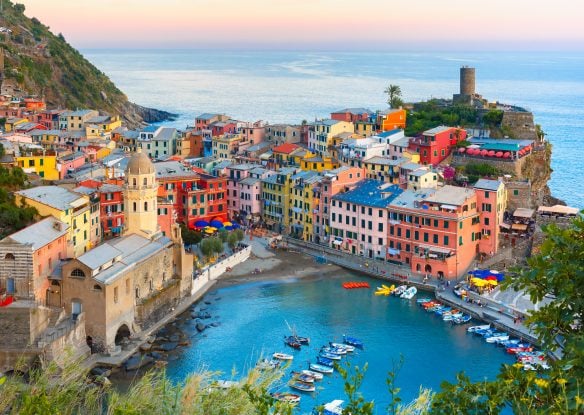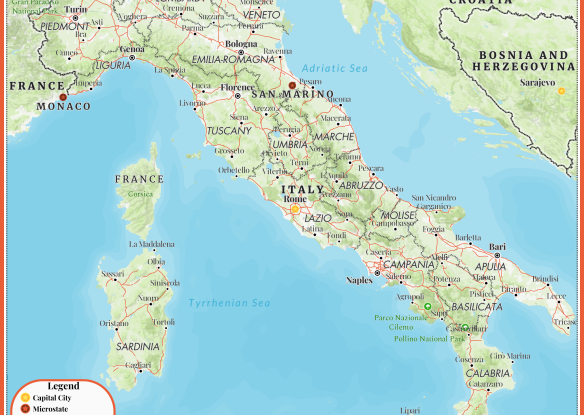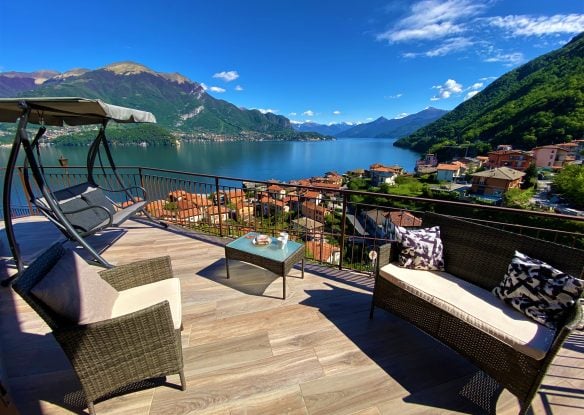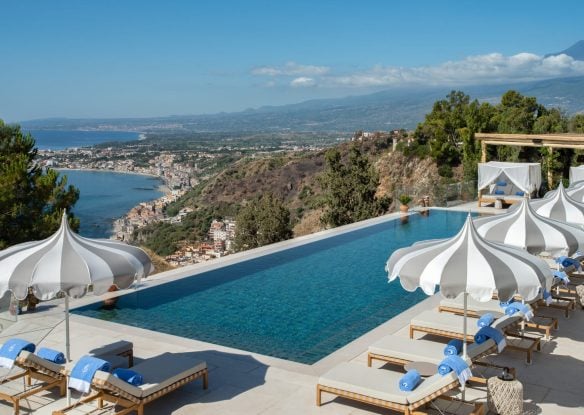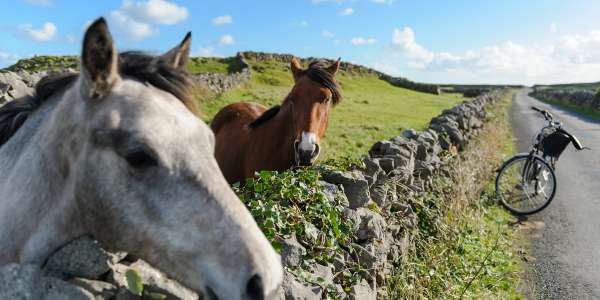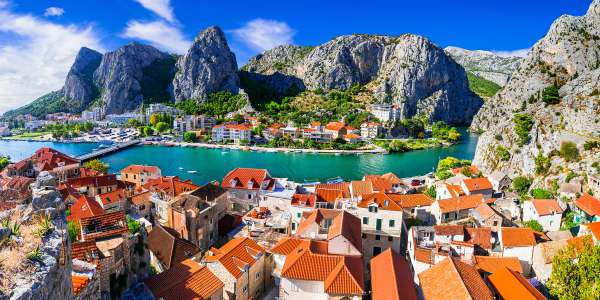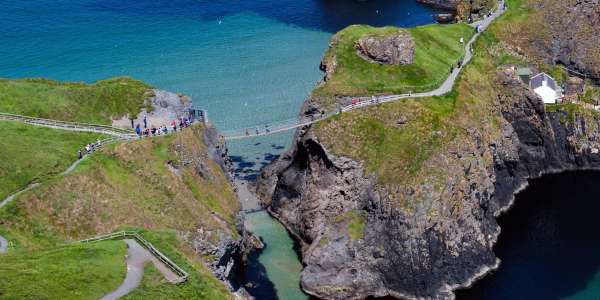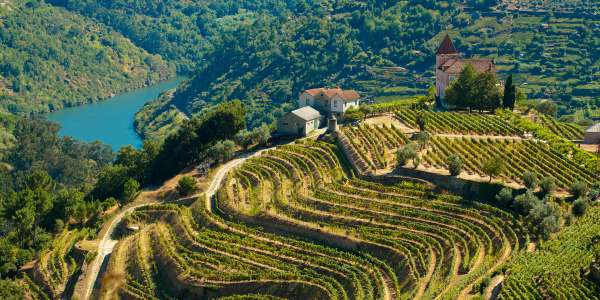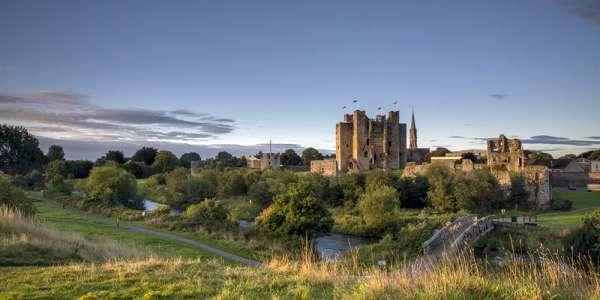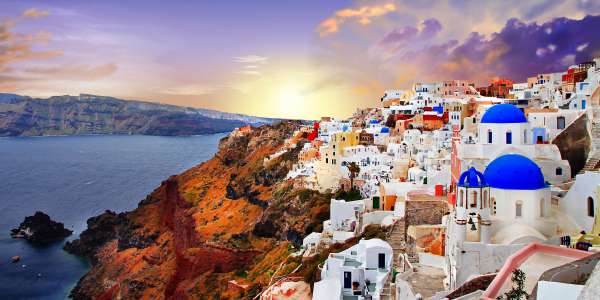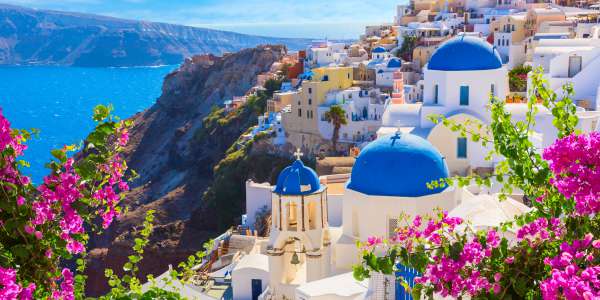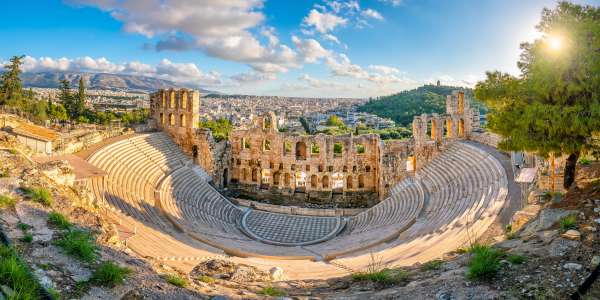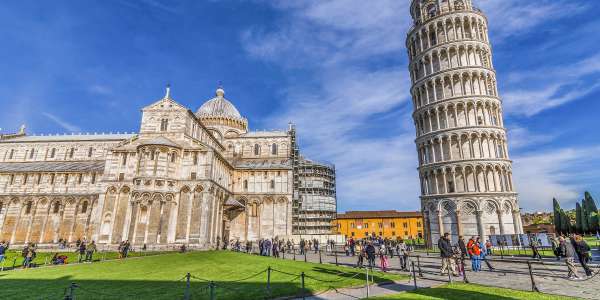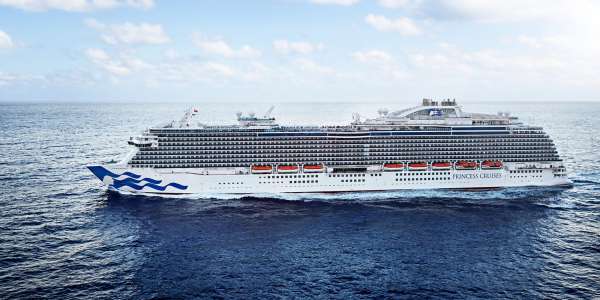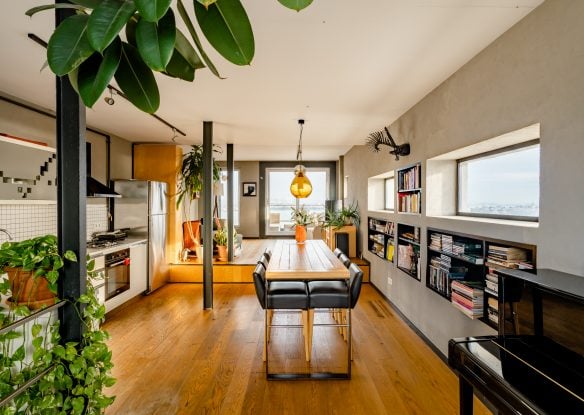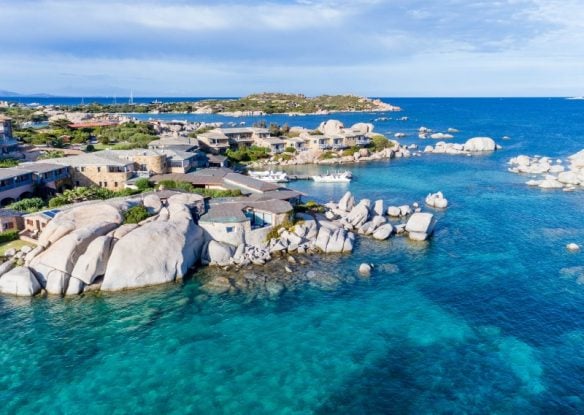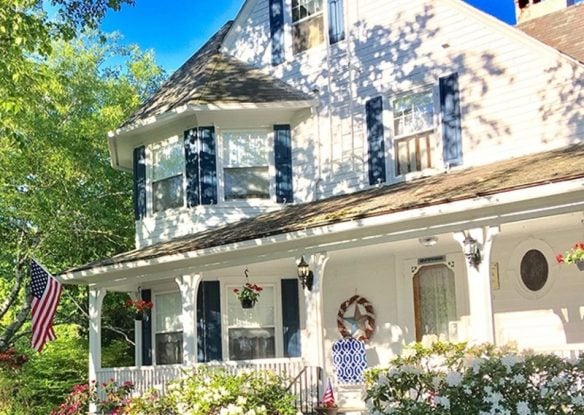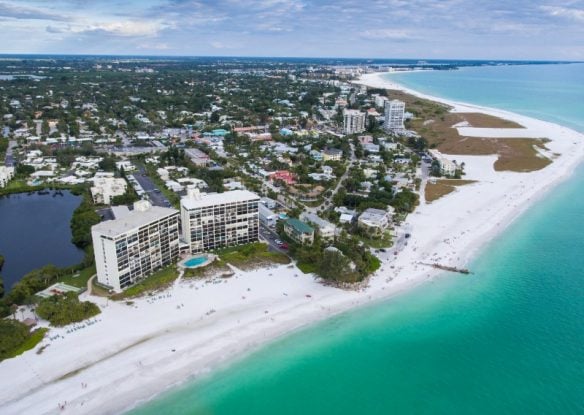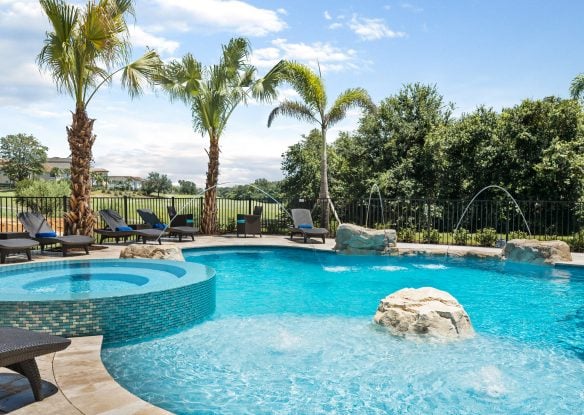Built atop hills for defensive purposes, surrounded by thick defensive walls, steep embankments, or cliffs, Italian hilltop settlements provided natural defenses for some of their early inhabitants, and today, they make for some of the best destinations to visit in Italy. In fact, these hilltop towns are so stunning, it’s hard to believe they’re real!

Ostuni
The Puglia region’s White City is a hilltop town that sits just five miles from the glistening expanse of the Adriatic Sea. The medieval walled city was built without a plan, and you can easily tell by stepping into its confusing webs of streets and maze of alleyways, staircases and arches. The buildings were built right on top of one another, while archways support the houses they connect, making up for a lack of strong foundations. The stark white structures dazzle in the southern sun, and are brightened by vibrant blue and green wooden doors as well as the occasional geranium pot and cacti. Turn one way and find a dead end, turn another and get a glimpse of the sapphire sea.
At the highest point of the city is the cathedral, built in the 15th century in Gothic style, rare in this region where most of the churches are austere Romanesque or ornate Baroque. Nearby, streets are lined with boutiques and souvenir shops selling all sorts of fashions at a bargain price, local olive oil, bottles of wine, and all sorts of other goods. The Ostuni Street Market is held on Saturday, featuring lots of fresh food, vegetables, fruit and nuts, straight from local farms.

Montepulciano
If you’re a wine lover, don’t miss Montepulciano. Even if you aren’t, after a visit, you probably will be. This beautiful hilltop town’s biggest claim to fame is the wine produced in the area, Vino Mobile di Montepulciano, which has been sipped since the Middle Ages. Montepulciano towers over the lush, rolling hills from a 2,000-foot limestone ridge, and the walls of the city date to the 14th century, but recent archaeological findings show that Montepulciano existed way back in the 4th century BC. You could spend an enjoyable afternoon simply wandering the medieval streets and enjoying the free wine, meat and cheese samples offered in the stores, though you’ll also have the chance to visit a number of picturesque palaces and churches too.

Orvieto
Orvieto is one of the most dramatic of all the Italian hilltop towns, sitting atop a cliff a volcanic butte overlooking the scenic plains of Umbria. Its 14th-century Gothic cathedral is renowned for its vibrant facade and Renaissance painter Luca Signorelli’s gorgeous frescoes in the Chapel of San Brizio. The cathedral is surrounded by a fine Etruscan museum, a world-class gelato shop and a visitor center. Underneath Orvieto lies a magical myriad of Etruscan-era tunnels and grottos that have been used as wine storage, World War II bomb shelters and as a means of escaping sieges over their 2,500-year history. Drinking wine in a ceramic cup while gazing at the cathedral will allow you to truly soak up the essence of Orvieto, while the Torre del Moro bell tower affords impressive views of the town and Umbrian countryside, particularly glorious at sunset.

Perugia
One of the country’s best-preserved hilltop towns, Perugia is one of Italy’s best-kept secrets. It’s also famous for its chocolate, jazz and outstanding cuisine, with specialties like wild boar and truffle. Perugina is one of several chocolate producers, making world-renowned Baci (kisses) chocolates that are to-die-for, while the city’s underground galleries offer a fascinating journey through the ruins of the Etruscan and the Roman people. Start at the Pozzo Etrusco, an eerie Etruscan well that’s believed to date back to the 3rd century BC, before wandering over to the remains of the Rocca Paolina fortress, a well-preserved warren of medieval streets and squares that are spread out like a second city underneath the modern-day streets above.

San Gimignano
One of the best places to visit in Tuscany, San Gimignano is known as the “Manhattan of the Middle Ages” for its skyline of 14 tall stone towers that soar dramatically from the Tuscan countryside. It’s famous throughout the world, and is a UNESCO site for representing “a masterpiece of human creative genius.” At the height of its glory, there were some 72 towers as tall as 160 feet, each built by the town’s patriarch families in a competition as a display of their wealth. Today, the remaining towers provide impressive views of the city and surrounding valley. Other highlights include Piazza del Duomo, the town square, The Collegiata, which contains a remarkable series of frescoes, and a museum, located in the heart of the city offering the opportunity to learn about the architectural, social, and historical aspects of the Middle Ages in Tuscany.

Urbino
Urbino is off the well-beaten path, but it’s one of the most beautiful and romantic hilltop towns in the country. Located in the Marche region in central Italy, it’s set around a Renaissance palace and has historical significance as the birthplace of Raphael. Ducal Palace houses one of the most illustrious Renaissance art collections in all of Italy, and the entire town was named a UNESCO World Heritage Site. Be sure to visit the 17th-century Duomo and explore Raphael’s house, which is now a museum. When you need more energy, fuel up with an espresso at Caffe Basili, and then head to Albornoz Fortress at the top of the town to savor the amazing views of Urbino sprawled out below.

Monticchiello
This ancient hilltop village with just 200 or so residents, is one of Tuscany’s most overlooked gems. To reach it, you’ll need to park just below it before following a path to the entrance, one of the original passages through the stone defensive walls that still surround much of the town, with imposing towers to either side. Monticchiello is believed to have been founded over a thousand years ago, but the oldest structures seen today are the walls and their associated towers, and the church, with both dates back 850 years. If you’re a cycling enthusiast, this hilltop town is a must-do, with the curving cypress-lined route often pictured in publications for those visiting Tuscany via bicycle.

Civita di Bagnoregio
This “jewel on the hill,” Civita di Bagnoregio is home to just six permanent residents and many more free-roaming cats. Mostly due to its topography, it’s managed to escape the modern age, teetering atop a pinnacle soaring high above a massive canyon. Not exactly easy to get to, you’ll have to reach it by walking a long stone path that starts at the end of the road from neighboring Bagnoregio, but that just means that you’re more likely to enjoy it practically all to yourself. While the once important Etruscan city is mostly empty, there are still several small eateries, inns and other attractions, along with many jaw-dropping views.

Sorano
Often called the City of Tufa for its perching placement on volcanic tufa stone, Sorano is a hilltop town that retains much of the activity of centuries ago. Surrounded by vineyards, wheat fields, grazing sheep and olive groves, it boasts carved caves in the porous rock that will transport you back in time, along with a myriad of medieval alleyways to stroll; shops, medieval churches, palazzos, Etruscan tombs and more to explore. The Rocca Degli Orsini is one of the most interesting places to visit, a castle originally built in the 14th century, though it’s been completely renovated since. Two large angular bastions, connected to the main gate with a line of walls, are known as Saint Peter’s Bastion and Saint Mark’s Bastions. The main gate itself is impressive too, decorated with a coat of arms.

Brisighella
Brisighella, located in the verdant and fertile Emilia-Romagna region, is a medieval town with defensive walls and a prominent castle fortress at its precipice. The 14th-century Rocca Manfrediana Castle continues important works of medieval military art while the nearby clock tower was erected in the 13th-century for similar defensive purposes. The quiet medieval village with its cobbled streets spans just 1.2 miles in length but houses a number of important monuments, including the Manfrediana Fortress, a Venetian example of the excellent medieval military art; the Clock Tower, the defense rampart built in 1290, and the sanctuary of Monticino.

